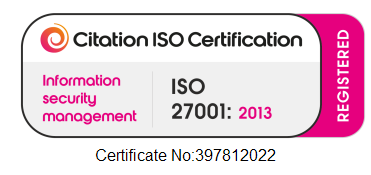.png)
For years, the corporate screensaver has been treated as background noise. Most people remember them as relics of the 90s, a bouncing logo across the screen or a slideshow of generic images that filled the void when employees stepped away from their desks. But in 2025, organisations are rediscovering that this digital real estate is more than just filler. It is a communication channel hiding in plain sight.
Why corporate screensavers matter in today’s workplace
Screensavers sit at the intersection of habit and visibility. Every time an employee locks their laptop, joins a meeting, or leaves their screen idle, that space becomes a canvas for messaging. Unlike an email that can be ignored or a Slack ping that vanishes into the feed, the screensaver commands attention in a quiet, passive moment. This makes it one of the few channels that employees cannot filter out.
In a world where inboxes are saturated and people feel overwhelmed by notifications, corporate screensavers offer a rare opportunity for consistent, low-friction engagement. They are part of the work environment, not another channel competing for clicks. That’s why organisations are rethinking how they use them - not as digital wallpaper, but as a powerful communication tool.
The role of screensavers in cyber security awareness
The resurgence of corporate screensavers is being driven by cyber risk as much as culture. High-profile incidents such as the recent Heathrow Airport cyberattack have shown that employees are often the weakest link in security, but they can also be the strongest defence if informed and engaged.
Imagine a workforce where every idle screen reinforces reminders to lock devices, spot phishing emails, or report suspicious activity. These micro-touchpoints build habits far more effectively than annual training sessions buried in a learning management system. And in a live cyber incident, the same screensaver channel can pivot instantly to display emergency instructions. Instead of silence, confusion, or rumour, employees receive a clear directive the moment their screens lock. That ability to shift from passive awareness to real-time alerts is what gives corporate screensavers new relevance in 2025.
Screensavers as a digital poster campaign
Screensavers are essentially digital posters that go everywhere the workforce goes. Physical posters pinned to office walls only reach those who visit the building. A Slack announcement disappears into the scroll. But a screensaver campaign follows every employee laptop, unifying messaging across offices, home desks, and co-working spaces.
This makes them particularly effective for rolling out initiatives such as values refreshes, wellbeing drives, or policy changes. They are not a replacement for other channels but an amplifier, ensuring that strategic messages are seen again and again until they stick. Repetition without fatigue is the strength of a well-designed corporate screensaver campaign.

At a Glance
Table of Contents
.png)
How Heed modernises corporate screensavers
At Heed, we see screensavers not as static slideshows but as part of a dynamic communication ecosystem. Our platform allows organisations to manage and update corporate screensavers centrally, pushing campaigns out across every device with ease. This means HR, IT, and internal comms teams can align their messaging in real time. A wellbeing campaign in January, a culture refresh in spring, and a cyber awareness series in summer can all be delivered without relying on employees to open yet another email.
The real strength lies in integration with Heed’s instant alerting. Everyday campaigns keep people informed, but when a crisis hits, the same screensaver channel pivots into emergency mode. If a system outage or cyberattack occurs, every idle device becomes a real-time information board. Instead of fragmented word-of-mouth updates or contradictory emails, employees see the same clear message across the organisation. That consistency reduces confusion, speeds up response, and protects trust.
The corporate screensaver renaissance
Corporate screensavers are not about nostalgia; they are about rediscovering an underused channel and giving it purpose. In an era of constant digital noise, the most effective messages are often the ones delivered in the quiet moments when people pause. Screensavers provide exactly that: a subtle but persistent way to reinforce culture, protect against threats, and keep employees aligned.
At Heed, we believe resilience depends not only on technology but also on communication. When systems fail, your people look for answers. Corporate screensavers are one of the ways we make sure those answers are visible, timely, and consistent. Because in the end, trust is built not just in how you recover from a crisis, but in the messages your people see every single day — even when their screen goes idle.

.svg)




.svg)
.svg)
.svg)